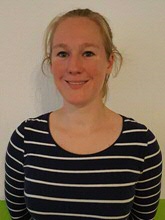A taste of historic cookery - a reconstruction of the daily meal as prepared by common burghers of Early Modern Dutch cities, AD 1500-1850

M.M.A. (Merit) Hondelink, MA
E-mail: m.m.a.hondelink@rug.nl
Promotor: Prof. dr. R.T.J. Cappers
Co-promotor: Prof. dr. B. Blondé
Financed by: NWO
Project Description:
In the course of the Early Modern period, the population of the Netherlands gradually increased. In addition to population growth, the Netherlands also experienced strong urbanisation. In order to enable, sustain and feed a growing urban population, both the rural and urban landscape, economy and society underwent massive changes. The food choice and alimentary practices of the population also changed markedly in this period.
Although historical and archaeological studies pay more and more attention to past food economies, our understanding of the food and alimentary practices of the common Dutch burgher is still far from complete. This project aims to fill this lacuna by investigating what the common burghers of Early Modern Dutch cities ate, how they prepared their daily meal and how they disposed of their waste.
Suitable evidence for the research of food and alimentary practices of the common Dutch burgher comes from 1) historical sources, 2) bio-archaeological sources and 3) (experimental) gastronomy. Each source has its individual merits, biases and limitations. By combining them into a singular interdisciplinary study, we expect to avoid biases and limitations. The usage of data from all three disciplines complimentarily would contribute greatly towards consolidating the knowledge on the preparation of the daily meal by common burghers in Early Modern Dutch cities.
Research Questions:
The main aim of this research is to expand our knowledge of the food and alimentary practices of the common Dutch burgher. The central question that will be addressed in this research is: how did the common burghers of Early Modern Dutch cities prepare their daily meal and how did they dispose of their waste?
To address the main research question, five interconnected themes with their own sub-questions will be discussed: 1) food production, 2) food procurement, 3) food preparation, 4) food consumption and 5) the disposal of kitchen and consumption waste.
1) Which foodstuffs were produced in the vicinity of the case study (city of Delft)? To what extent did city inhabitants produce their own food? Did they buy produce to supplement what could not be cultivated, or was it the other way around?
2) Were there production centres of agriculture, horticulture, livestock and fishery that supplied Delft? Via which routes were spices and other foodstuffs from overseas territories (re)distributed? Where would people buy their produce (e.g. markets, apothecaries, artisans)?
3) How were foodstuffs prepared? What type of fuel was used? How was food preserved? If preserved foodstuffs could be stored for a prolonged amount of time, were people in Early Modern cities really that dependent on the seasons for the ingredients for their meals? Which basic kitchen utensils were present in every household? Do these utensils leave marks or other traces on the ingredients and can these be recognised during bio-archaeological analysis?
4) What kinds of meals were being prepared and what was their likely nutritional value? What kinds of food were consumed for medicinal purposes?
5) What happened to the kitchen waste and excrements, and where were they discarded off/deposited? Can kitchen and consumption waste be distinguished from each other through bio-archaeological research? What is the effect of consumption on the taphonomy of foodstuffs? Are there other ways to indicate the presence of perishable foodstuffs aside from seeds, fruits, pollen and bones?
| Last modified: | 23 July 2018 1.29 p.m. |
